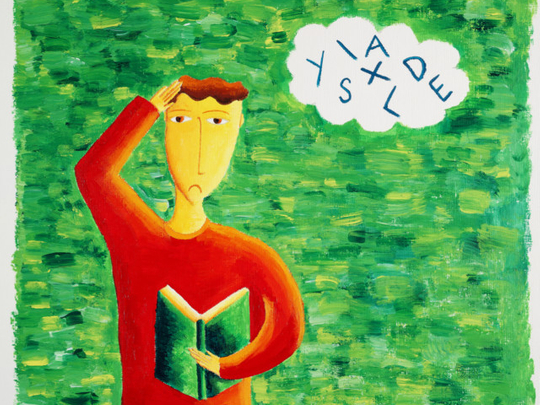
Learning disabilities are an umbrella term for a group of disorders that affect a broad range of academic and functional skills including the ability to speak, listen, read, write, spell, reason and organise information.
A learning disability is not indicative of low intelligence or lack of motivation in children. On the contrary, research indicates that many children or adults with learning disabilities may have above-average intelligence while others will have heightened skill sets.
Parents who are battling with their children’s poor performance at school, or their persistent problems with certain areas of learning, will do well to understand all they can about learning disabilities, especially dyslexia, dysgraphia and dyscalculia. This is the first step to ensure that these children get the right help, are taught in ways that are tailored to their unique learning styles, and over time, can overcome classroom challenges.
Dyslexia
The Dyslexia Research Trust defines dyslexia as a specific difficulty with learning to read, spell or write (or any combination of these), in someone who is normally intelligent and receives adequate teaching.
Children struggling with dyslexia often know what they want to say, but have trouble finding the words to express their thoughts. Some may have difficulty understanding or remembering what they hear. Recalling the exact sequences of things can be problematic, and they may miss parts of words or sentences. Other indicators include forgetting information, and struggling to tell time and tie shoelaces.
Besides physical manifestations, dyslexic children also display subtler emotional signs — they can appear withdrawn or depressed, seem uninterested in group activities, and often withdraw from peers and siblings.
But dyslexia is a not a mental illness and The Yale Centre for Dyslexia and Creativity stresses this fact throughout their website: “Dyslexia is sort of an invisible problem. It’s not an illness like chicken pox or a cold.”
Dyslexia.org explains how dyslexia can affect anyone, anywhere. “No correlation has been found between the incidence of dyslexia and nationality, income, ethnicity, race or IQ.”
While it makes no sense to talk of cures when dyslexia is not a disease, solutions include yellow or blue filters to help visual problems, specialised auditory training and remedial reading programmes.
Dysgraphia
The National Centre for Learning Disabilities (NCLD) defines dysgraphia as a learning disability that affects writing and leads to spelling errors, poor handwriting, and putting thoughts on paper.
The International Dyslexia Association (IDA) explains: “Children with dysgraphia do not have primary developmental motor disorder — a cause of poor handwriting — but they may have difficulty planning sequential finger movements such as the touching of the thumb to successive fingers on the same hand.”
In children, dysgraphia exhibits itself in illegible writing, and several inconsistencies in writing. Unfinished words and omitted words are common, as is irregular spacing between words and letters. Children with dysgraphia also exhibit unusual wrist, body or paper positions and may complain of cramps or sore hands.
Because it is a processing disorder, the manifestations may change how it manifests itself, at different stages of life. But according to the IDA, dysgraphia can be diagnosed and treated at any stage. “Although early intervention is, of course, desirable, it is never too late to intervene to improve a student’s deficient skills.”
Dyscalculia
The Department for Education in the UK defines dyscalculia as a condition that affects the ability to acquire arithmetical skills. “Dyscalculia is like dyslexia for numbers,” their website explains. “People with dyscalculia experience great difficulty with the most basic aspects of numbers and arithmetic.”
The most common signs of dyscalculia in children are difficulty in understanding concepts of place, value, quantity, numbers, positive and negative values, and carrying and borrowing. They may exhibit difficulty in understanding word problems, or in sequencing information or events. But above everything else, they will display difficulty in recognising patterns when adding, subtracting, multiplying or dividing, and understanding fractions. This also extends to understanding concepts such as time and measures.
Some of the simpler strategies involve the use of diagrams for math concepts, coloured pencils to differentiate problems, mnemonic devices to learn steps, and rhythm to teach math facts. The website Dyscalculia.org positions itself as the answer to serious math problems, with several online resources for children and adults. NCLD is more assuring in it approach: “Working around strategies and accommodations help lessen the obstacles that dyscalculia presents. And just like in the area of reading, math LD is not a prescription for failure.” ■













